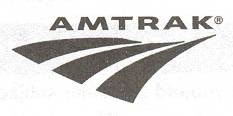
The Southern Pacific Depot
This structure is notable for several things. First, it is the oldest commerical structure in Springfield Oregon, having been constructed in 1891. It was built according to Southern Pacific standard plan # 22 for a combination station and depot. (What is meant here is that it was a station that was designed to handle both passengers, station, and freight, depot.) Given its building date, the structure, not surprisingly, is now regarded as a "Victorian structure." More specifically it was constructed in the style called "Queen Anne." In this style the builder used as many pieces of architectual ornamentation in erecting the structure as he thought he could get away with/as much as his pocketbook, or the pocketbooks of the buildings owners would tolerate. Regardless of which was the case in the building of this structure, the fact remains it is the last Queen Anne style passenger train station left in the state.
Passenger service into Springfield disappeared in 1965. For a time the SP continued to use the building for freight. But soon even that business evaporated. Finally in 1988 the city council of Springfield took the SP up on its offer to give the building to the city.
Subsequent to its "purchase" by the city it was moved to its new location. It became the anchor for Springfield's "western" (car) entry. It was placed near the old Mill Race, and a park. In its new surroundings, the building was restored to how it looked in 1913.
 In addition to the station, the city also purchased a "baggage car" and placed it out in back of the building. The car that was purchased was actually a combination baggage and Railway Post Office car that had belonged to the Pennsylvania Railroad. Notwithstanding its heritage, the car was moved to the city, sandblasted and then re-painted into the Southern Pacific livery.
In addition to the station, the city also purchased a "baggage car" and placed it out in back of the building. The car that was purchased was actually a combination baggage and Railway Post Office car that had belonged to the Pennsylvania Railroad. Notwithstanding its heritage, the car was moved to the city, sandblasted and then re-painted into the Southern Pacific livery.The only question that remains is, why display a baggage car? Why no t a passenger car? Well, possibly because the city of Springfield found it to be a "cheaper" way to go. Baggage cars, in the early 1990's, may have been more plentiful than they appear to be now. Nowadays, according to the officials at Amtrak, such is not the case. And thus, Amtrak's trains # 50 and 51, The Cardinal, are forced to operate with 3 coaches, a sleeper, a combination diner/lounge car, but NO baggage car. Not surprisingly, in the coaches, this results in bewildering mounds of luggage stacked in the mini-luggage bins at the ends of the cars, in the overhead compartments, and whereever else one can find room.
t a passenger car? Well, possibly because the city of Springfield found it to be a "cheaper" way to go. Baggage cars, in the early 1990's, may have been more plentiful than they appear to be now. Nowadays, according to the officials at Amtrak, such is not the case. And thus, Amtrak's trains # 50 and 51, The Cardinal, are forced to operate with 3 coaches, a sleeper, a combination diner/lounge car, but NO baggage car. Not surprisingly, in the coaches, this results in bewildering mounds of luggage stacked in the mini-luggage bins at the ends of the cars, in the overhead compartments, and whereever else one can find room.
 t a passenger car? Well, possibly because the city of Springfield found it to be a "cheaper" way to go. Baggage cars, in the early 1990's, may have been more plentiful than they appear to be now. Nowadays, according to the officials at Amtrak, such is not the case. And thus, Amtrak's trains # 50 and 51, The Cardinal, are forced to operate with 3 coaches, a sleeper, a combination diner/lounge car, but NO baggage car. Not surprisingly, in the coaches, this results in bewildering mounds of luggage stacked in the mini-luggage bins at the ends of the cars, in the overhead compartments, and whereever else one can find room.
t a passenger car? Well, possibly because the city of Springfield found it to be a "cheaper" way to go. Baggage cars, in the early 1990's, may have been more plentiful than they appear to be now. Nowadays, according to the officials at Amtrak, such is not the case. And thus, Amtrak's trains # 50 and 51, The Cardinal, are forced to operate with 3 coaches, a sleeper, a combination diner/lounge car, but NO baggage car. Not surprisingly, in the coaches, this results in bewildering mounds of luggage stacked in the mini-luggage bins at the ends of the cars, in the overhead compartments, and whereever else one can find room.






